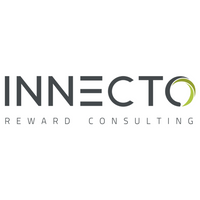Six tips to test the transparency of your reward and benefits communication strategy

Transparent communication is about being open, honest and acting in a way that is easy for employees to see and understand. However, an aspiration for transparency doesn’t automatically translate into reality. The CIPD’s Reward Management (2019) report found that 60% of the 2,031 employees polled said they had never had their pay explained to them, and consequently this poor communication was driving perceptions of unfair pay.
Perceptions of unfairness in reward, regardless of whether there is any truth behind this view, can be extremely damaging to the culture and productivity of a business, so how can we test the transparency of our communication? The short answer is to ask your employees and listen to what they tell you, but there are different ways to do this.
1. Look at the whole picture
When trying to understand the transparency of communications, it is often the case that it is not so much a lack of data but a lack of meaningful data. It can be easy to gather intelligence, such as engagement surveys, exit interviews and focus-group feedback, but so often these pieces of information are reviewed in isolation. Some may include direct questions around communication, but there is likely a wealth of information that indirectly provides signposts as to whether communication is transparent.
The challenge is in collating all this information in a way that enables you to see the complete image. Trends suggesting a lack of transparency may not be so obvious when looking at one source, but when reviewed together can paint a different picture.
2. Combine different methods of feedback
Focus groups or listening groups have their place, but depending on the openness of the culture, employees are not always as forthcoming as you might like. Anonymous surveys can get around this but leave little opportunity for follow up questions and it is easy to end up with survey fatigue. A less direct, more informal approach, can be more effective in encouraging employees to open up, such as utilising benefit champions or asking line managers to canvass feedback on the transparency of communications.
3. Pay attention to what is being asked
Transparent communication leads to trust and understanding. Therefore, listening to the questions being asked through different channels can be an effective way at testing whether your communication has been transparent and clear. Answers and comments suggesting a lack of trust or understanding in one area could suggest a lack of transparency in communications around reward. If similar questions are coming from different sources it likely indicates a lack of clarity.
It can be disappointing when a lot of effort has gone into a communication strategy and it does not hit the mark but being aware of this provides an opportunity to get it right, so effort is well spent not wasted.
4. Monitor benefits uptake
Whether benefits are being utilised is a good indication as to the effectiveness of your communications. If utilisation of benefits is low, this could suggest a lack of clarity in your communication strategy. Some benefit utilisation levels are easier to track than others but technology platforms, such as our Amplify platform, can provide data on click through and utilisation rates, and can also aid with communications through push notifications through the native app.
5. Ask new starters
It is equally important to be transparent with your reward and benefits communications externally to support your employer brand and ensure you are attracting the best talent. Asking new starters what attracted them to working for your organisation and whether that matches what they have experienced can provide useful insights.
In a previous role I was responsible for an in-house recruitment team and a significant amount of the work involved recruiting sales executives. We regularly heard stories from candidates talking about companies promising commission structures and earning potential that then never materialised. Consequently, we went to great lengths to explain our commission structure to build trust in what the candidates were hearing. While this was a great aspiration, it was important to understand whether it worked in reality. After a few weeks into the role we would ask new sales executives whether what we talked about in the recruitment process was what they experienced to measure the effectiveness of our strategy.
6. What do external sources say
Understanding what current and past employees are saying on external sources like Glassdoor or Facebook can give an indication as to how transparent your communications are. They can, of course, be indicative of other things too but they do give you a chance to respond and, if done effectively, it can help bring clarity and transparency to your communication with current, past and potential future employees, all of which contributes to your employer brand.
The author is Cathryn Edmondson, senior reward consultant at Innecto.
This article is provided by Innecto Reward Consulting.
In partnership with Innecto Reward Consulting
We have more than 20 years' experience in getting employers' pay and reward working harder for them.







